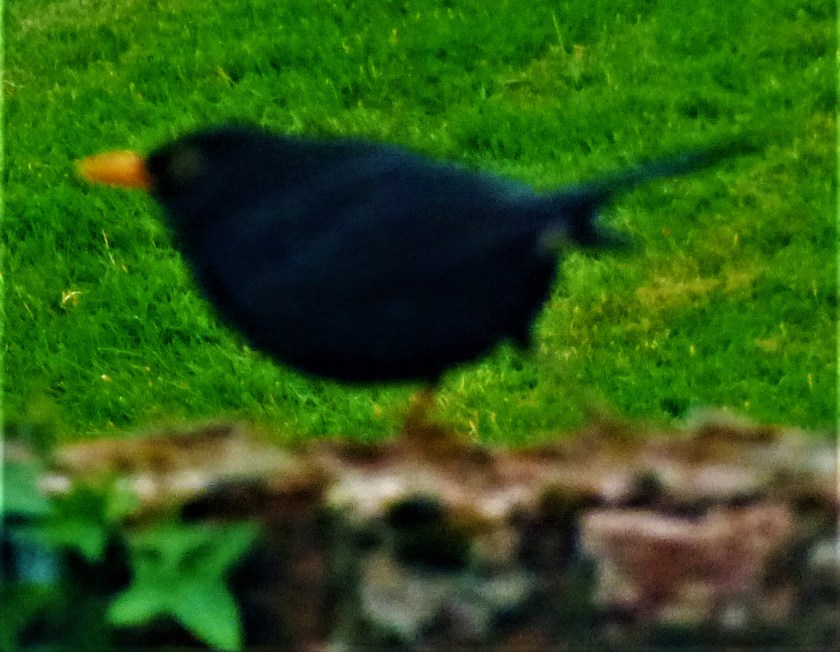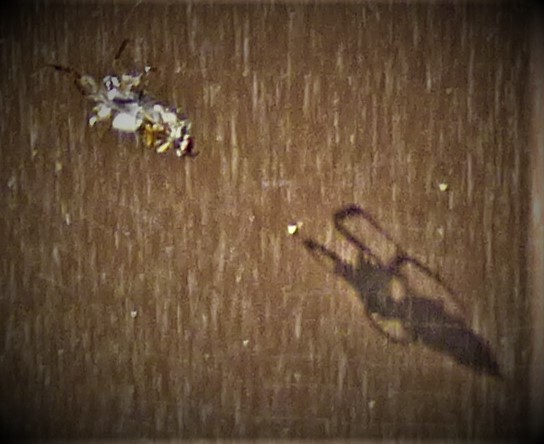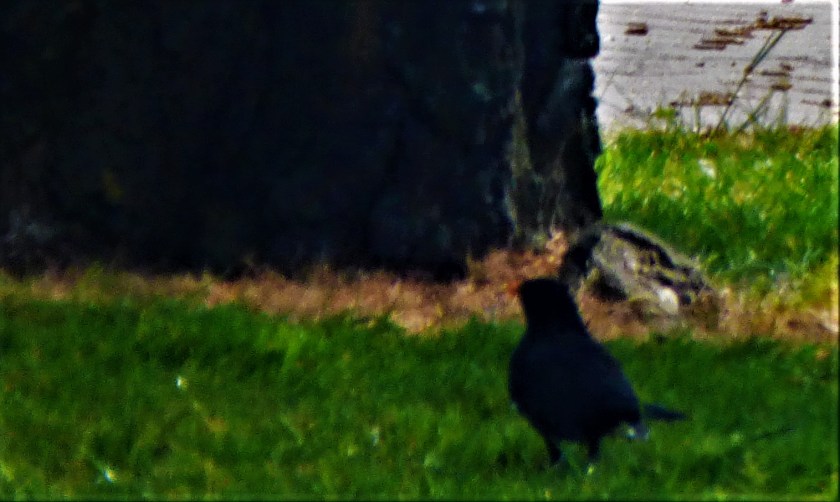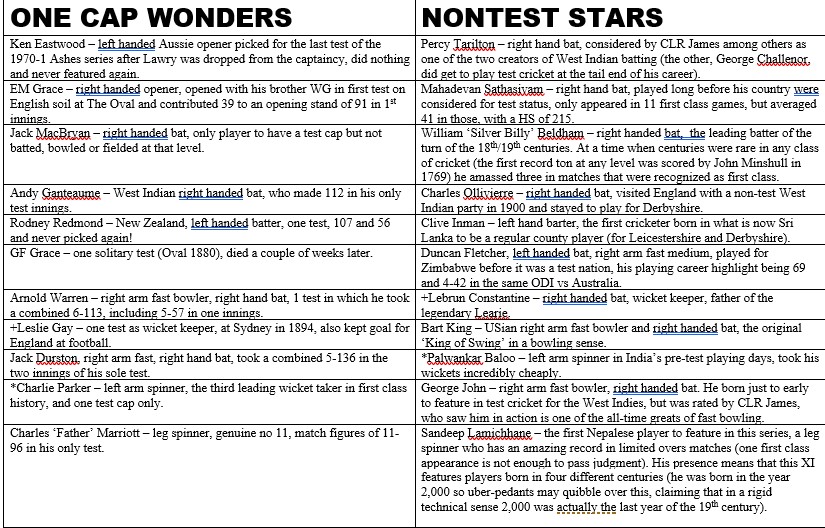INTRODUCTION
It is time for another variation on the “All Time XI” theme. This one features an XI made up of one-cap wonders and and XI designated Nontest.
THE BRIEF
The ‘one cap wonders’ XI is fairly self explanatory – these people made precisely one appearance at the highest level for various reasons. The Nontest XI comprises players who either flourished before their country gained test status or belong to a country that has never enjoyed test status. Many of these players are making their debuts in this series of posts, but in some cases they have featured elsewhere. First be introduced, in most cases representing decisions that appear to make as much sense as cluttering up an already overloaded cricket calendar with a new competition featuring innings of 100 balls per team and a raft of rule changes are…
THE ONE CAP WONDERS XI
- Ken Eastwood – brought in for the final test of the 1970-1 Ashes series when the Australian selectors decided to replace Bill Lawry as skipper and without consulting their new skipper to be Ian Chappell decided that the old skipper could not play under the new. Eastwood, already 35 years of age, was like Bill Lawry a blocker by instinct, but he was nowhere near as good a batter, hence why he had not previously caught the selectors eyes. He is an example of what I consider the worst kind of ‘one cap wonder’ story – someone brought in at the end of a series who unless they do something very special is practically guaranteed never to get picked again. England in the 1980s and 1990s were continuously guilty of doing this, indeed Mike Brearley was only confirmed as skipper for the sixth test of the 1981 Ashes on the understanding that he would accept an ‘experimental selection’ for that game, with the series already decided, and I personally think that Mr Brearley should have said “If you are going to be experimental bring in your envisaged new skipper as well.”
- EM Grace – played in the first test on English soil in 1880, by when he was 40 years of age. He contributed 39 to opening stand of 91 with his brother WG in the first innings. He had toured Australia with an amateur party in 1863-4. He should have played in the 1882 test that inaugurated The Ashes, rather than AN ‘Monkey’ Hornby (the Hornby of “my Hornby and my Barlow, long ago”), who was as much Spofforth’s bunny as another Lancashire opener, Atherton, would be McGrath’s bunny in the later 1990s. Hornby’s bizarre tampering with the England batting order in the final innings contributed to the defeat – CT Studd, with two centuries against the Aussies to his name already that season was held back, getting progressively more nervous, until no10, and ended up 0 not out having not faced a ball! In addition to his aggressive top order batting EM Grace was a fearless close fielder (he once caught AE Stoddart, a renowned hitter, while standing so close in at point that he was able to pass the ball to the wicket keeper without moving his feet) and had moments with his bowling, which included lobs (he once dislodged renowned stonewaller Harry Jupp by landing a steepler directly onto that worthy’s bails).
- Jack MacBryan – the only capped test cricketer who never batted, bowled or fielded at that level – the match was ruined by rain, he was waiting for a bat when the weather made its final intervention and he was never called up again.
- Andy Ganteaume – the West Indian right handed batter suffered from a doctrinaire interpretation of the situation – he was selected in place of an injured player, scored 112 in his only innings, and then the injured player returned. Ganteaume thus had a test average of 112.
- Rodney Redmond – the Kiwi left hander is his country’s equivalent of Ganteaume – one test match in which he made 107 and 56, a record match aggregate for a one cap wonder.
- GF Grace – in his case the selectors cannot be blamed, since by the time of England’s next game after his solitary cap he was in his grave. However, he rated second only to his brother WG as an attacking batter at the time, had his moments with the ball and was a brilliant fielder.
- Arnold Warren – the Derbyshire fast bowler who was also a good enough bat to have a first class hundred was called up for one match in the 1909 Ashes, collecting 6-113 overall, including 5-57 in one innings.
- +Leslie Gay – when he was called up to keep wicket for England at the SCG in 1894 Gay completed a curious double – he had also kept goal for England at football. His performance with the wicket keeper’s gloves was not a distinguished one, and in England’s second innings 437 he was the only person not to reach double figures (bowled off his pads by a full toss with his score on 4). Nonetheless, England won the game (it was the ‘follow on’ match at the start of that series).
- Jack Durston – the giant Middlesex fast bowler was among the many called up by England during the 1921 Ashes (30 players appeared in home colours that series), and match figures of 5-136 suggest he was unlucky to be dropped, even if you do not subscribe to my opinion that ‘one cap wonders’ in general; say more about the inadequacies of the selectors than they do about the players.
- Charlie Parker – the Gloucestershire left arm spinner took more first class wickets than anyone else bar Rhodes (Yorkhsire, SLA) and Freeman (Kent, LS) and yet had to make do with one test cap. He was named in the XII for Leeds in 1926 but was the player left out, and skipper Carr then put Australia in, saw Bardsley out to the first ball of the game and then dropped a sitter from Macartney in the same over, and watched Macartney reach 100 by lunch time and ultimately 151 at a run a minute.
- Charles ‘Father’ Marriott – the Lancashire and Kent leg spinner and genuine no11 was called up against the West Indies in 1933, took 11-96 in the match and was never picked again.
Our assemblage of ‘one cap wonders’ has a strong looking top five, an all rounder at six, some good bowlers and a wicket keeper. It is now time to meet the opposition…
NONTEST STARS XI
- Percy Tarilton – one of the pair considered by many, including CLR James, to be the forefathers of West Indian batting (the other, George Challenor, did get to play test cricket, but only when well past his best).
- Mahadevan Sathasivam – reckoned the first great batter to be produced by the island then known as Ceylon, now Sri Lanka. He only played 11 first class matches, recording an average of 41 in those games with a best score of 215. Mike Marqusee in “War Minus The Shooting”, his account of the 1996 World Cup, tells some good stories about ‘Satha’ as he was known.
- William ‘Silver Billy’ Beldham – two centuries before Graham Thorpe this Farnham native was rated the best batter around. At a time when centuries at any level were rare (the first ever documented individual century was scored by John Minshull in 1769) Beldham amassed no fewer than three in matches considered to have been first class. He lived, as befits a character from the game;s old testament, to a great age, 96 to be precise, and in equally classic old testament fashion became the father of sons and daughters (no fewer than 39 of them, 11 with his first wife and 28 with his second!) According to one witness, James Pycroft, his speciality shot was the cut, which if Pycroft is even close to accurate must have rivalled the Robin Smith version for ferocity.
- Charles Ollivierre – the right handed batter came to England with the 1900 West Indians and stayed to play for Derbyshire.
- Clive Inman – among the first Ceylonese to be a regular in the County Championship, for Leicestershire and Derbyshire (Laddie Outschoorn of Worcestershire, a near contemporary, was also from that island).
- Duncan Fletcher – A fine all rounder for Zimbabwe, batting left handed and bowling right arm fast medium. He was just too old to get to play test cricket, his playing highlight being 69 and 4-42 v Australia at the 1983 World Cup. After his playing days he coached, first at Glamorgan and then with England. He was in charge for the 2005 Ashes triumph, and although he overused the provisions of central contracts, effectively using them as a blanket ban on their holders playing county cricket overall he did a splendid job for England, the first of two Zimbabweans who did not say much to do so, the other being Andrew Flower who guided England to the top of the test match rankings, a mere 12 years after they had been bottom thereof. The story of England’s renaissance in the early 2000s spearheaded as it was by these two Zimbabweans is well told in Steve James’ (who experience Fletcher the coach in his Glamorgan playing days) “The Plan”.
- +Lebrun Constantine – West Indian middle order batter and wicket keeper. He made the 1906 tour party to England only after fans raised a subscription to pay for his passage. His son Learie did get to play test cricket as a brilliant and dashing all rounder and went on to achieve considerable success in the field of human rights, ultimately becoming Baron Constantine of Nelson and Maraval (Nelson was the Lnacashire town for whom he played league cricket, and where he settled, Maraval the place in Trinidad from which he hailed).
- Bart King – the USian (acknowledgement to Kiwi blogger Heather Hastie for this handy term) fast bowler was the original ‘King of Swing’ as I mentioned in my ‘non-cricketing birthplaces XI’, and took his wickets at a mere 15 a piece. He made four tours of England with The Philadelphians, on the last of which he took 87 wickets in 10 first class appearances.
- *Palwankar Baloo – those who saw my India post will already know that I was impressed enough by this mans achievements in the matches he did get to play to name him in my all-time India XI. It will come as no surprise that I chosen to name a spin bowler (left arm orthodox in this case) as captain, a distinction he was denied in life due to caste prejudice.
- George John – CLR James for one insisted that this man was one of the all time great fast bowlers. The West Indies gained test status too late for him to benefit (although his slightly younger regular bowling partner George Francis did play test cricket near the end of his career).
- Sandeep Lamichhane – the Nepalese leg spinner (see my ‘100 cricketers series‘, especially this post) has a magnificent record in limited overs cricket. Any county signing him as an overseas player would get a round of applause from me (he is still not yet 20), although I would not recommend an effort to fast track his country to the top table – Bangladesh were promoted at the wrong time and have suffered in consequence, Ireland’s promotion came just as a gifted generation were fading from the scene and has not worked out that well for them, though Afghanistan have benefitted from their promotion. Lamichhane the county overseas star could be one of the great stories of post Covid-19 cricket – I truly believe that if a county could secure his services it would be a case of ‘who dares wins’.
This team has a fine looking top five, an all rounder at six, a keeper who can bat and spectacular quartet of bowlers.
THE CONTEST
While according full respect to the ‘one cap wonders’ I would confidently expect the ‘Nontest Stars’ to dominate proceedings – the lower half of the ‘one cap wonders’ order is unlikely to score many runs, and King and John would seem to have the edge on Warren and Durston as new ball bowlers, while I would also expect Lamichhane and Baloo to compare decently with Marriott and Parker. Allowing for the uncertainties of cricket I will settle for predicting a series score of 4-1 to the Nontest Stars (no McGrath style 5-0 predictions for me!). The acknowledgement of the Nontest Stars in this post sets up a nice bonus feature.
FOR MORE WOMEN’S TEST MATCHES
It is time to attend to half of the potential pool of cricketers (see this post for nore on my opinions on women playing alongside the men), the women. At the moment, the women’s game is thriving, but save for one match every two years between the two oldest foes it is exclusively played over limited overs. I would like to see much more women’s test cricket played, involving many more countries. Here are just a few who will almost certainly miss out on what cna confidently predicted to be successful test careers:
- Smriti Mandhana – the attack minded Indian opener fares better in ODIs than in T20s and it is my reckoning that she would be better still in tests.
- Laura Wolvaardt – the 20 year old South African is a superb technician with the bat, fares considerably better in ODIs than T20s, and given the chance to open in test matches (her natural position in any batting order) she could well establish an Agarwal-like record.
- Deepti Sharma – the Indian off spinning all rounder is another whose ODI record far outweighs her T20 record, and whose fundamentally correct batting approach seems to have all the right ingredients for long form cricket, while spinners usually benefit from being able to bowl more overs.
- Shabnim Ismail – the South African quick bowler is impressive in limited overs cricket, and given the opportunity in test cricket she could be devastating.
- Poonam Yadav – the diminutive Indian leg spinner is fabulous in limited overs cricket, and is a huge wicket taker, which latter suggests that she would make excellent use of the opportunity to bowl for long spells.
Also of course, if long form cricket were a regular feature of the women’s game there would be more who would be well suited to it.
PHOTOGRAPHS
Our two teams for today’s contest have strutted their stuff, and it remains only for me to apply my usual sign off…





















